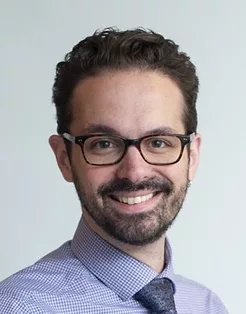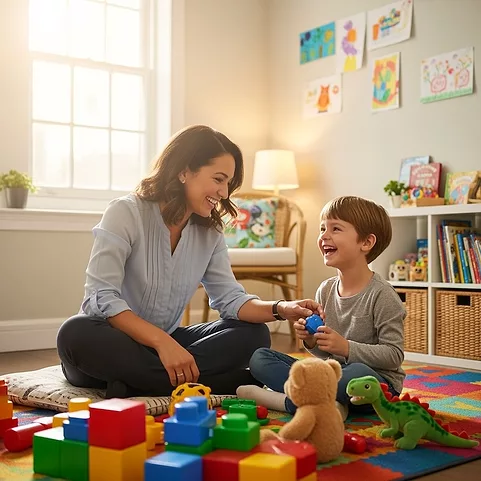Managing Substance-Induced Psychosis in Teens

CCPR: What do we know about the relationship between substance-induced psychosis and primary psychotic conditions in children and teens?
Dr. Beckmann: There is a compelling link between substance use and the development of psychotic disorders, especially in youths, but we’ve struggled to understand causality. Is the psychosis specifically caused by the substance, and if so, will it resolve entirely with abstinence? Or is it more complicated? Do some people have a genetic predisposition to both substance use and psychosis? Or do substances unmask the psychosis in a subset of people who, if they hadn’t used the substances, would not have gone on to develop psychosis? And is the psychosis that develops fundamentally different from a primary psychotic disorder?
CCPR: Which substances are associated with psychosis in youth?
Dr. Beckmann: Cannabis and stimulants have a strong association with psychosis in youth. Cannabis use in youth has decreased compared to a decade ago, from about 23% of high schoolers to 17%, according to the 2023 Youth Risk Behavior Survey (www.cdc.gov/yrbs). But the potency of cannabis is increasing a lot, which is an independent risk factor for psychosis (ElSohly MA et al, Biol Psychiatry Cogn Neurosci Neuroimaging 2021;6(6):603–606). So, we’re seeing, over time, more psychosis attributed to cannabis. Stimulants are the other main substance we consider in substance-induced psychosis, particularly methamphetamines, but also cocaine and even prescribed stimulants (though that may only be among people who are misusing them or have an underlying but unrecognized psychotic or bipolar disorder).
CCPR: Are there other common substances that cause psychotic symptoms?
Dr. Beckmann: Hallucinogens are kind of a special case because part of why people use them is to experience hallucinations. But when we think of pathologic substance-induced psychosis, we think about when those symptoms last well beyond intoxication—what we sometimes call hallucinogen persisting perception disorder. These tend to be visual hallucinations, often things like visual trails. There is also a broad category of “research chemicals” and “club drugs” that can cause psychosis, including synthetic cannabinoids, cathinones or “bath salts,” and tryptamines like DMT and MDMA (the active ingredient in Ecstasy and Molly). The landscape is constantly changing because if the DEA makes something illegal, a new drug is designed to get around that, and these designer drugs are implicated in a lot of emergency room presentations for psychosis.
CCPR: Can we differentiate substance-induced psychosis from primary psychotic disorders?
Dr. Beckmann: Not very well! Certain substances are more likely to cause specific psychotic symptoms, such as stimulants causing formication (the sensation of insects on or under the skin). Disorganization and persecutory delusions are also common with stimulants. Paranoia and persecutory delusions are also prominent in psychosis related to THC, along with anxiety, emotional lability, and depersonalization. But these are far from perfect clues. Often, it’s the timeline that will give you the most information. If someone has a history of psychotic symptoms before they ever started using substances, that’s a clear indicator of primary psychosis. Sometimes there is no psychosis prior to substance use, but there is a history of changes consistent with a schizophrenia prodrome; this would be another imperfect clue that there is primary psychosis. In the end, the only way to definitively make the distinction between primary and substance-induced psychosis is the presence or absence of psychosis during prolonged periods of sobriety.
CCPR: How long of a period of sobriety are we talking about?
Dr. Beckmann: The DSM criteria would say at least a month, but I think a lot of researchers would say that people can have lingering psychotic symptoms related to substances for quite a bit longer than that—at least several months.
CCPR: Are there any other clues to a substance-induced psychosis?
Dr. Beckmann: The timing of onset can be a clue. The peak onset of a primary psychotic disorder is usually from the late teens to early 20s in males and from the early 20s to early 30s in females. Subtle shifts in thinking and social interactions may appear years before the condition is officially diagnosed (www.tinyurl.com/yc5kjs95). So, if there is substance use and psychosis earlier or, more commonly, later than these times, this might argue for a substance-related psychotic episode. Increased insight may be more likely and fewer or milder negative symptoms may be present in substance-induced psychosis. Some studies have also suggested more positive symptoms in substance-induced psychosis, but other studies have not found this distinction. Check the family history, since there tends to be a weaker family history of primary psychotic disorders in those with substance-induced psychosis (Fraser S et al, Schizophr Res 2012;136(1–3):110–115).
CCPR: When it comes to treatment, does it matter whether the psychosis is substance-induced or not?
Dr. Beckmann: It does have implications for management. When you think that any psychosis is secondary, you try to treat the underlying condition, whether the psychosis is due to mania, depression, or substance use. If you can identify and treat a substance use disorder, then maybe the psychosis will abate. But keep in mind that the goal of treating the psychosis is to make the patient more comfortable, less scared, less anxious, etc. We want to help people with distressing symptoms as they occur, and because we’re not necessarily sure what we’re treating, that means treating psychosis directly is warranted even if we suspect the cause is related to substance use. There aren’t many data on specific regimens for treating substance-induced psychosis. Some small studies point to olanzapine. Other studies more generally favor second-generation antipsychotics (SGAs; Bersani FS et al, Hum Psychopharmacol 2015;30(4):249–254). (Editor’s note: Keep in mind that cannabis stays in the brain for weeks, and that withdrawal leads to more craving, both of which complicate the clinical picture when THC is exacerbating psychotic symptoms. For more, see CCPR Sep/Oct 2019.)
CCPR: D2-blocking SGAs have so many side effects. We generally recommend reducing them whenever possible in our young patients, no matter the diagnosis, but very slowly, say 10%–15% every few months, or even over a couple of years. Over what period can you or should you reduce them in a substance-induced psychosis?
Dr. Beckmann: The literature is not clear on when and how quickly to taper antipsychotics in general, both in children and in adults. In youth with presumed substance-induced psychosis, I tend to taper medications sooner than usual if they are doing well. This is especially true if they have stopped using the substance or have cut down markedly. But with any antipsychotic taper, there’s a chance that it won’t go well, so take it slow and don’t be afraid to adjust. Slow it down even more or turn around and increase the dosage if you need to.
CCPR: What does motivational interviewing (MI) look like in patients with substance-induced psychosis?
Dr. Beckmann: MI is really important: What are this kid’s goals? They may have no desire to stop using cannabis but want to stay out of the hospital or want to stop spending so much money or fighting quite so much with their parents about marijuana. If you can find even a little bit of leverage, you may get somewhere eventually. The specific language that I use with patients and families employs basic principles of MI, trying to understand what the patient’s goals are, not trying to deny the benefits that they perceive from the cannabis or other substance, but making sure that we’re talking about potential downsides that they perceive as well. (Editor’s note: For our webinar on MI for teens with a focus on marijuana, visit: www.tinyurl.com/d7aery8h.)
CCPR: How do you address the problem of peer group substance use?
Dr. Beckmann: A lot of people with substance-induced psychosis talk about all the people around them who are using substances—they find it unfair that their friend can smoke a joint and not experience these things that are really scary. I like to compare it to an allergy: Some people can’t eat peanut butter, so maybe the patient loves peanut butter cups but their friend can’t eat them at all. Both are unfortunate and indisputably unfair realities. The best we can do is think about ways to reduce the likelihood that the patient is going to have those scary experiences.
CCPR: Some patients won’t stop using substances and don’t mind using medication to reduce their psychotic symptoms, and their families don’t plan to send their child to residential care. Do we withdraw from the case or continue with harm reduction?
Dr. Beckmann: Sometimes we need to acknowledge that abstinence, at least in the short to medium term, is not a realistic goal for some people. I think meeting people and families where they’re at can go a long way, but it can be ethically sticky. Am I prescribing medications to treat a side effect of another substance? I would say that harm reduction is better than the alternatives. If a teenager who’s smoking a lot of cannabis is willing to take medications and is engaged in treatment, that might give you more opportunity to use MI and may eventually lead to getting them to more formal substance use treatment.
CCPR: So, what would harm reduction look like for these kids?
Dr. Beckmann: When we talk about harm reduction, it might be about cutting down or using lower-potency THC. If someone feels like they’re getting the benefits of smoking with a lower THC concentration, that might be a big win. But it can also be keeping patients out of unsafe situations when they’re intoxicated. This includes vehicle safety: Many youths don’t appreciate how much cannabis impairs driving ability, even if they recognize the risks of drunk driving.
CCPR: How do you talk with parents about their child’s substance-induced psychosis?
Dr. Beckmann: I try to explain the basics of MI so that they understand where I’m coming from and because they may be able to use some of the principles with their child at home. The APA has an online brochure that is a good starting point: www.tinyurl.com/5fahfbum. A lot of what I talk about with parents is that if there’s a mismatch between what they’re asking of the kid and what the kid feels ready to do, then just continuing to tell the kid to quit is unlikely to help. I explain to parents that saying “You have to stop doing this” is rarely effective, but that if they work with their child to understand where the child is coming from, they can make a lot more progress. I also talk about contingency management, meaning parents may need to have significant consequences if their kid is unable to adhere to the rules of the house, which can include abstinence from substances.
CCPR: What is the prognosis for youths with substance-induced psychosis?
Dr. Beckmann: A recent study found that in people with a diagnosis of substance-induced psychosis, about 28% had a diagnosis of a schizophrenia spectrum illness after six years (Rognli EB et al, Am J Psychiatry 2023;180(6):437–444). It’s not clear whether that represents an initial misdiagnosis or whether a conversion happens over time. In that study, about one-third of people under the age of 25 who were given a substance-induced psychosis diagnosis ultimately received a schizophrenia or related diagnosis.
CCPR: Yes, we need to monitor these patients over time. Thank you for your time, Dr. Beckmann.
Newsletters
Please see our Terms and Conditions, Privacy Policy, Subscription Agreement, Use of Cookies, and Hardware/Software Requirements to view our website.
© 2025 Carlat Publishing, LLC and Affiliates, All Rights Reserved.


_-The-Breakthrough-Antipsychotic-That-Could-Change-Everything.webp?t=1729528747)



